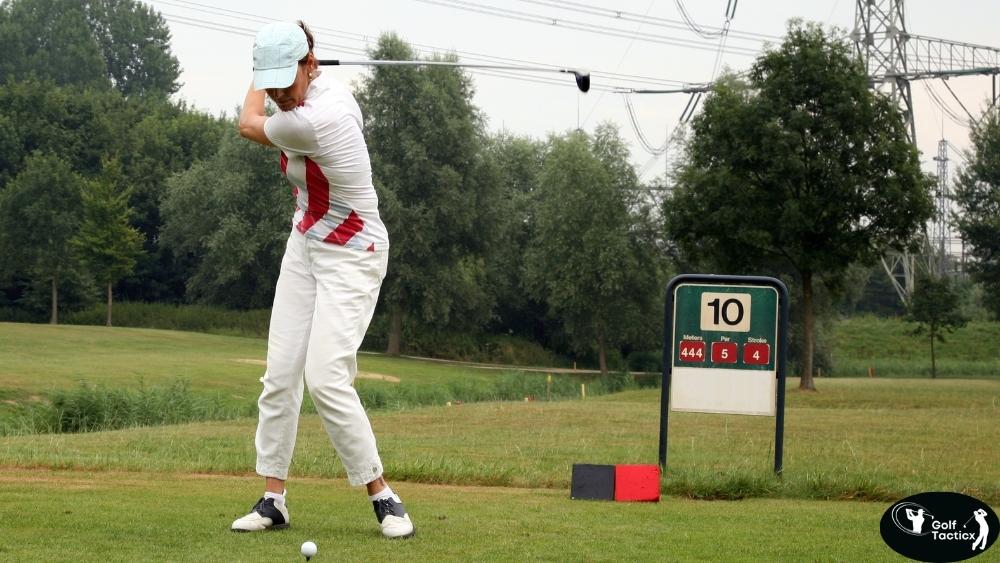In the previous post, we explored how to play firm fairways, focusing on proper club selection, ball positioning, and swing adjustments for optimal control.
Golfers face many challenges on the course, but one of the toughest is playing in wet conditions. Whether it’s rainy weather, damp fairways, or a soaked green, controlling spin and distance becomes much trickier in these conditions. The ball behaves differently, and your usual methods of control might not be as effective.
But don’t worry! With a few simple adjustments and techniques, you can still manage How to Control Spin and Distance in Wet Conditions?, even when things get a little soggy. In this blog post, we’ll dive into the best ways to adjust your game for wet conditions so you can stay in control and avoid making costly mistakes.
Understanding How Wet Conditions Affect Your Game
Before we dive into strategies, it’s important to understand how wet conditions affect the ball and your overall game. Here’s a breakdown:
Wet Grass and Fairways: Wet grass makes it harder for the clubface to make clean contact with the ball. The wet ground also causes the ball to sink deeper into the grass, reducing backspin.
Wet Greens: Greens that are wet can be slower than usual, meaning your putts may take longer to reach the hole.
Waterlogged Bunkers: Wet sand can cause the ball to behave unpredictably, making bunker shots a bit more challenging.
Ball Flight: When the ball is wet, it can lose some of its carry distance, causing it to fly shorter than expected.
How to Control Spin on Wet Fairways and Greens
Controlling spin is one of the most important factors for success in wet conditions. Here’s how you can adjust to maintain control:
Use a Higher Lofted Club
In wet conditions, it’s important to use clubs with a higher loft to prevent the ball from skidding too much on the ground. A higher-lofted wedge or iron will help create more backspin, which can give you better control when the ball lands.
When playing on wet fairways, use wedges like a 56-degree or 60-degree to get more spin. This will help the ball stop quicker and reduce excessive roll.
Focus on Clean, Crisp Contact
In wet conditions, it’s even more important to focus on hitting the ball cleanly and crisply. Wet grass can make it harder to get a solid strike, so make sure you’re not relying on too much force. A controlled, smooth swing is the key.
Avoid Excessive Spin with the Driver
When using a driver, it’s best to focus on reducing spin, especially in wet conditions. Wet conditions make it harder for the ball to stay in the air as long, so you want to avoid excessive backspin that might reduce distance. A lower, controlled shot with less spin will help you get the most distance on wet fairways.
Tips for Controlling Spin in Wet Conditions:
- Use higher-lofted wedges (56° or 60°)
- Focus on clean, crisp contact
- For drives, aim for less spin
- Practice controlling the ball with your short game to stop it quickly on the green
Adjusting Your Swing to Manage Distance
Wet conditions affect your distance in several ways. The ball doesn’t fly as far, and it may roll less after landing. You’ll need to make a few adjustments in your swing to account for these factors.
Club Up for More Distance
Because wet conditions can reduce the ball’s distance, you’ll need to use a stronger club than usual. For example, if you typically use a 7-iron for a certain distance, consider using a 6-iron or 5-iron instead. This adjustment ensures that you cover the right distance despite the reduced carry.
Stay Steady and Avoid Over-Swinging
In wet conditions, it’s tempting to swing harder to make up for lost distance. However, over-swinging can result in poor contact and inconsistent ball flight. Stay steady and focus on making smooth, controlled swings that generate solid contact. This will help you manage both spin and distance with more accuracy.
Keep Your Shots Low and Controlled
A low ball flight is ideal for wet conditions because it minimizes the effect of wet grass and wind. You’ll have more control over where the ball lands and how it reacts once it hits the ground. Using a punch shot or a controlled, low trajectory will help you get better results when conditions are soggy.
Playing on Wet Greens
Wet greens pose their own set of challenges, primarily because they slow down and affect the ball’s roll. Here’s how to deal with this situation: understanding how to control spin and distance in wet conditions is key to scoring consistently when the greens are soft and waterlogged.
Focus on Putting Speed
When putting on wet greens, remember that the ball will likely roll slower than on dry greens. Be prepared to adjust your putting stroke by using more power to ensure the ball reaches the hole. If you under-hit a putt on wet greens, it could stop short of the target. Practice is essential to refine how to control spin and distance in wet conditions, especially on unpredictable surfaces.
Use the Right Putter
A putter with a slightly larger face and more forgiveness can be helpful when putting on wet greens. It gives you more control and helps you maintain a smooth stroke. Additionally, make sure your putter’s face is clean and dry before each shot to avoid interference from moisture. A well-chosen putter can improve your chances when wet weather threatens consistency.
Avoid Short Putts That Break
When playing on wet greens, short putts that break may not break as much as they would on dry greens. You may need to adjust your aim to compensate for the lesser break. Practice putting on slower greens before your round to get a feel for the pace and adjust your technique.
Putting on Wet Greens Checklist:
- Adjust for slower speed on the green.
- Use a slightly larger face putter for forgiveness.
- Aim slightly differently to account for less break.
Dealing with Wet Bunkers
Bunkers can be particularly challenging in wet conditions, as the sand can become compacted, making it harder to get under the ball. Here’s how you can handle wet bunker shots:
Open the Face of the Club
When hitting a bunker shot in wet conditions, it’s helpful to open the face of your wedge. This will help you get under the ball more easily, even if the sand is compacted. The open face will also help generate more spin, giving you better control over the ball’s stop.
Focus on Steady Contact
In wet conditions, it’s easy to become frustrated and make erratic swings. However, focus on making steady, controlled contact with the ball. Keep your swing smooth and avoid forcing the shot. This will help you make clean contact and ensure the ball comes out of the bunker without too much splashing.
General Tips for Playing in Wet Conditions
Lastly, here are some general tips to help you stay in control when playing in wet conditions:
Stay Dry: Wet hands and a wet grip can cause the club to slip out of your hands. Use gloves and make sure your clubs are dry.
Watch Your Footing: Wet ground can be slippery. Be mindful of your footing, especially when swinging or walking in the rough.
Keep Your Clubs Clean: Wet conditions can make your clubs dirty. Wipe them down regularly to maintain clean contact with the ball.
Conclusion
Playing in wet conditions may seem intimidating, but with the right approach, you can manage your spin, distance, and overall game. Remember to adjust your clubs, focus on clean contact, and make the necessary swing adjustments to account for the soggy fairways and slower greens.
Don’t let the rain keep you from enjoying your round take control of the conditions and play with confidence.
Next up: We’ll explore how to play effectively in strong crosswinds. You’ll want to know how to adjust your shots to ensure that the wind doesn’t send your ball off course!
















Leave a Reply